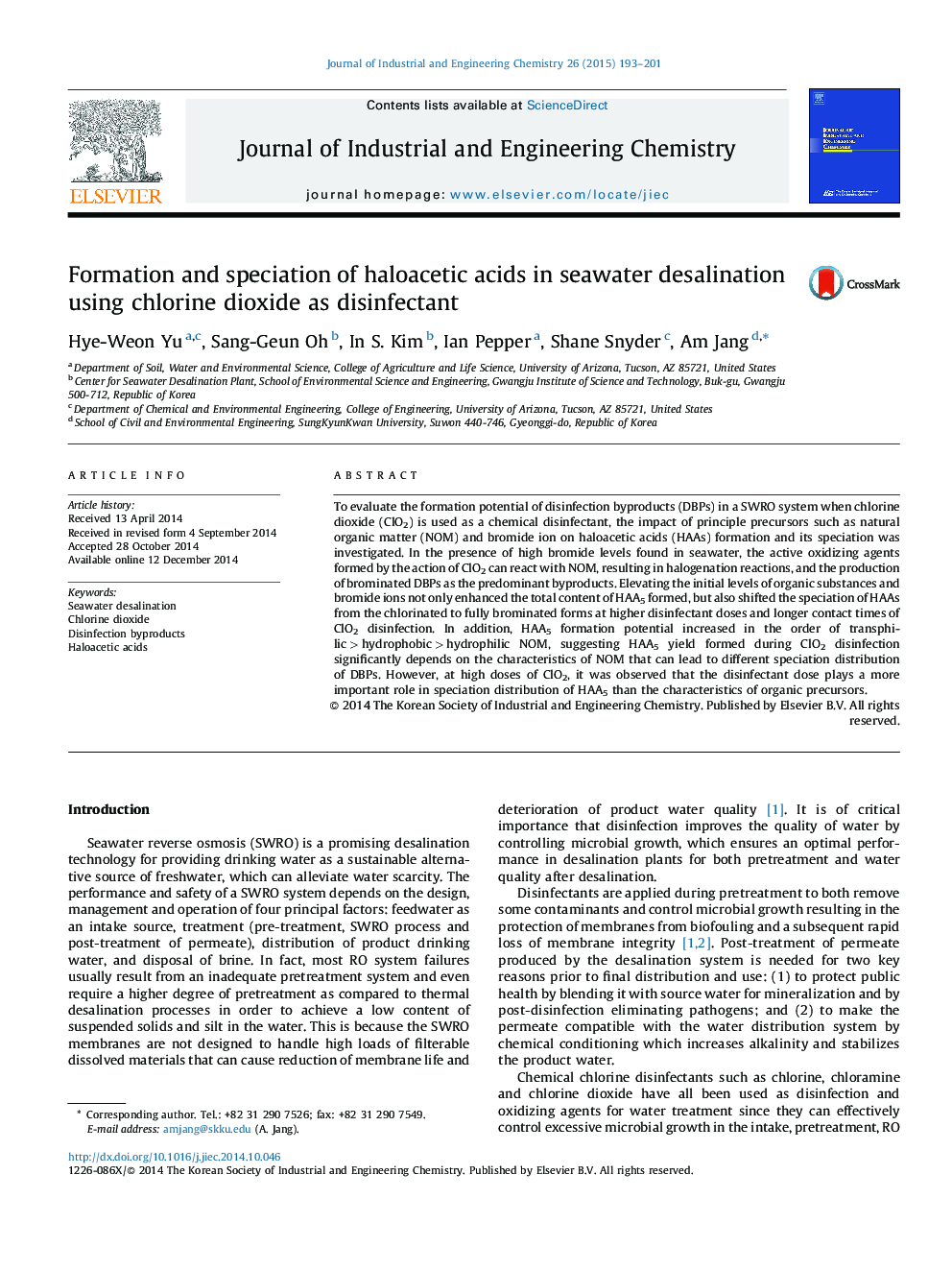| Article ID | Journal | Published Year | Pages | File Type |
|---|---|---|---|---|
| 228554 | Journal of Industrial and Engineering Chemistry | 2015 | 9 Pages |
To evaluate the formation potential of disinfection byproducts (DBPs) in a SWRO system when chlorine dioxide (ClO2) is used as a chemical disinfectant, the impact of principle precursors such as natural organic matter (NOM) and bromide ion on haloacetic acids (HAAs) formation and its speciation was investigated. In the presence of high bromide levels found in seawater, the active oxidizing agents formed by the action of ClO2 can react with NOM, resulting in halogenation reactions, and the production of brominated DBPs as the predominant byproducts. Elevating the initial levels of organic substances and bromide ions not only enhanced the total content of HAA5 formed, but also shifted the speciation of HAAs from the chlorinated to fully brominated forms at higher disinfectant doses and longer contact times of ClO2 disinfection. In addition, HAA5 formation potential increased in the order of transphilic > hydrophobic > hydrophilic NOM, suggesting HAA5 yield formed during ClO2 disinfection significantly depends on the characteristics of NOM that can lead to different speciation distribution of DBPs. However, at high doses of ClO2, it was observed that the disinfectant dose plays a more important role in speciation distribution of HAA5 than the characteristics of organic precursors.
